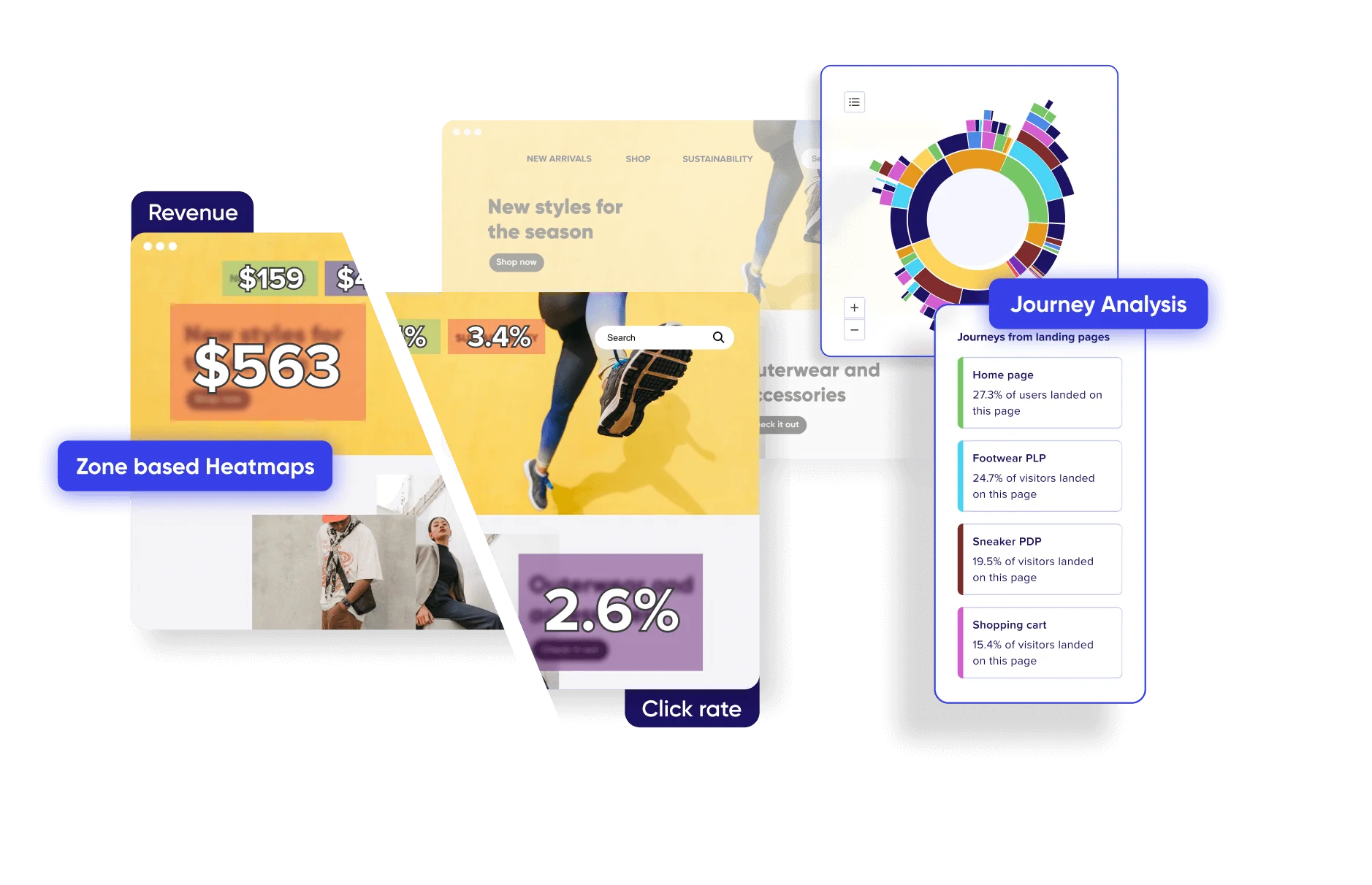
Know what drives engagement and abandonment on your sites and mobile apps.

The user journey is a key aspect in enhancing user experience and boosting the conversion rate on any online platform. It represents the sequence of interactions a user has with a website or app, beginning from the landing page and progressing through various stages to the final goal conversion, often represented visually. Grasping this journey is critical for website designers and developers to generate a more user-friendly interface that aligns with the needs and expectations of their audience. The user journey is a dynamic concept; it evolves as users interact with your website or app and their needs and expectations shift.
Hence, continuous monitoring and analysis of user behavior are essential to identify trends and patterns. This ongoing analysis, through website analytics, can help optimize the user journey, enhancing customer satisfaction and increasing conversions.
Understanding the user journey can also help pinpoint potential barriers that may prevent users from achieving their goals. These could be technical issues, such as slow loading times or broken links, or they could be design-related, such as unclear website navigation or confusing layout. By identifying and addressing these issues, you can improve the user experience, reduce the bounce rate, and increase the likelihood of goal conversion.
A user journey is a visual representation of the process a user undergoes when interacting with a website or app. It maps out various stages of the user’s interaction, from the initial landing page through to the final goal conversion.
The user journey is typically depicted as a series of steps or stages, each representing a specific interaction or decision point. Each step in the user journey represents a decision point or interaction that the user has with your site or app.
These steps can include actions such as clicking on a link, filling out a form, or responding to a call to action. The user journey also encapsulates the user’s emotional responses and perceptions at each stage, providing valuable insight into their overall user experience. The user journey website is not a linear process; it can involve multiple paths and decision points, depending on the user’s needs and goals. This complexity is why it’s essential to map out the user journey, as it allows you to understand the various paths that users may take and the decisions they may make along the way.
The user journey is a critical component of effective website design. It provides valuable insight into how users interact with your site, their needs and expectations, and where potential obstacles or barriers may exist.
This information can inform your design process, helping you to create a more intuitive and user-friendly user interface. A well-designed user journey can enhance user satisfaction and increase the conversion rate. By understanding the user’s needs and expectations at each stage of the journey, you can design your site to meet these needs and facilitate the user’s progress towards their goals. This can result in a more positive user experience, leading to higher customer satisfaction and increased likelihood of goal conversion. The user journey also provides a framework for ongoing analysis and optimization.
By continually monitoring and analyzing user behavior through website analytics, you can identify trends and patterns that can inform your design process. This ongoing analysis can help you to optimize the user journey, addressing any issues or obstacles, improving the click-through rate, and enhancing the overall user experience.
Know what drives engagement and abandonment on your sites and mobile apps.
In the realm of User Experience (UX), a critical aspect of website navigation, the User Journey and User Flows are two distinct yet interconnected concepts. The User Journey is a comprehensive term encapsulating the series of steps a user undertakes when interacting with a digital product or service. This journey starts from the initial point of contact, traverses through various touchpoints, and culminates in a specific outcome.
It provides a holistic view of the user’s experience, which is instrumental in optimizing the conversion rate. User Flows, on the other hand, delve into the specifics. They focus on the path a user takes to complete a particular task within the product or service.
These are typically represented as flowcharts or diagrams and are used to map out the potential routes a user might take to achieve their goal. User Flows, in essence, are a subset of the User Journey website, detailing the step-by-step process involved in task completion. They play a significant role in reducing the bounce rate by ensuring a seamless user interface. Understanding the difference between User Journey and User Flows is crucial for effective UX design. It enables a more targeted approach to product development, focusing on enhancing the click-through rate and ensuring a user-friendly interface.
Know what drives engagement and abandonment on your sites and mobile apps.
User Flow refers to the path a user follows to achieve a specific goal within a digital product or service. It’s a key component of UX design and website navigation, facilitating designers in visualizing the steps a user must undertake to complete a task. This process aids in streamlining the user interface and making it as intuitive as possible, thereby enhancing the conversion rate.
The creation of a User Flow commences with a clear understanding of the user’s goal. This goal could range from purchasing a product, signing up for a newsletter, to accessing a specific piece of information on a landing page. Once the goal is defined, the designer maps out the most logical and efficient path to its achievement, taking into account the user’s needs and potential obstacles. This process is crucial in reducing the bounce rate and improving customer satisfaction. User Flows are typically represented as flowcharts or diagrams, with each step in the process represented by a different node.
These nodes are connected by lines that represent the user’s movement from one step to the next. This visual representation, coupled with website analytics, allows designers to easily identify and rectify any potential issues or bottlenecks in the process, thereby improving the click-through rate and ensuring effective call to action.
In conclusion, User Flow is an indispensable tool in UX design. By mapping out the user’s path to goal achievement, designers can ensure a smooth and efficient user experience, thereby increasing customer satisfaction and ultimately, the success of the product.